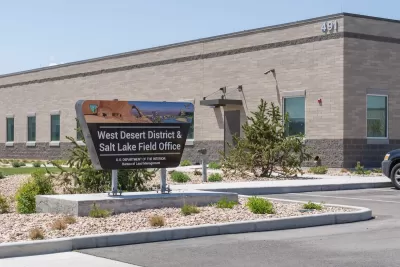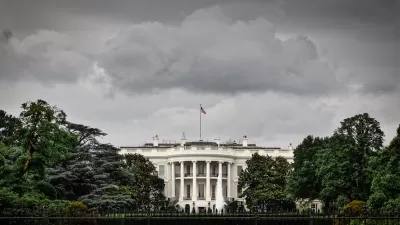The U.S. owns more than 650 million acres of public lands, and it has the power to sell or lease limited parcels for affordable housing. But mass disposal of public lands, as some legislators have proposed, is not the answer.

As housing costs soar in Western communities, public lands could offer a solution for creating affordable housing while preserving outdoor spaces. But first, we must protect these lands from privatization efforts.
Mark Allison of New Mexico Wilderness Alliance explains how federal land management agencies already have tools to help address the housing crisis. For instance, The Bureau of Land Management recently sold 20 acres of public land to Clark County, Nevada. The county is using the land to build 200 affordable homes. And Summit County, Colorado, partnered with the U.S. Forest Service to lease land to build 162 income-restricted rental units.
However, these opportunities face threats from privatization campaigns. Utah's governor recently sued to force federal “disposal” of public lands, while additionally proposed legislation would make it easier to sell public lands to private developers by counting them as having no value in federal budgets.
Allison argues that strategic use of the U.S.'s 650 million acres of public lands could help create affordable housing in high-cost Western communities without sacrificing the outdoor access that makes these places special. The key is using existing federal tools to identify appropriate parcels for development while conserving others.
FULL STORY: Public Lands Can Help Us Tackle the Housing Crisis in the West

Alabama: Trump Terminates Settlements for Black Communities Harmed By Raw Sewage
Trump deemed the landmark civil rights agreement “illegal DEI and environmental justice policy.”

Planetizen Federal Action Tracker
A weekly monitor of how Trump’s orders and actions are impacting planners and planning in America.

The 120 Year Old Tiny Home Villages That Sheltered San Francisco’s Earthquake Refugees
More than a century ago, San Francisco mobilized to house thousands of residents displaced by the 1906 earthquake. Could their strategy offer a model for the present?

Opinion: California’s SB 79 Would Improve Housing Affordability and Transit Access
A proposed bill would legalize transit-oriented development statewide.

Record Temperatures Prompt Push for Environmental Justice Bills
Nevada legislators are proposing laws that would mandate heat mitigation measures to protect residents from the impacts of extreme heat.

Downtown Pittsburgh Set to Gain 1,300 New Housing Units
Pittsburgh’s office buildings, many of which date back to the early 20th century, are prime candidates for conversion to housing.
Urban Design for Planners 1: Software Tools
This six-course series explores essential urban design concepts using open source software and equips planners with the tools they need to participate fully in the urban design process.
Planning for Universal Design
Learn the tools for implementing Universal Design in planning regulations.
Clanton & Associates, Inc.
Jessamine County Fiscal Court
Institute for Housing and Urban Development Studies (IHS)
City of Grandview
Harvard GSD Executive Education
Toledo-Lucas County Plan Commissions
Salt Lake City
NYU Wagner Graduate School of Public Service





























